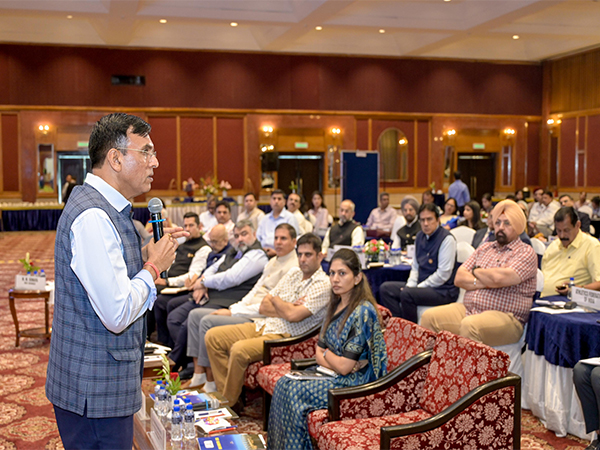
New Delhi [India], July 17 (ANI): Union Minister of State for Youth Affairs and Sports,Mansukh Mandaviya, on Thursday, detailed India's plan to emerge as the leading nation in terms of medal count at the 2036 Summer Olympics and Paralympics.
At the Khelo Bharat Conclave, participants included representatives from the National Sports Federations, the Paralympic Committee of India, the Indian Olympic Association, various institutions, leading corporate entities, and prominent figures in Indian sports administration. They engaged in a full-day discussion focused on positioning India as a global sporting power by 2047, as stated by the Sports Authority of India (SAI).
The dynamic gathering addressed multiple core areas outlined in theKhelo Bharat Niti2025 (sports policy). Discussions focused on the significance of effective governance and the forthcoming Bill set to be introduced during the Monsoon session of Parliament beginning on July 21.
While competitors continue to be the central focus of theKhelo Bharat Niti, the government has emphasized the part that National Sports Federations, state governments, and corporate entities must take to enable India to rank within the top 10 countries in the 2036 Summer Olympics and Paralympics.
Mandaviya stated, "Sports is a collective effort. We can establish objectives and attain them only through collaboration. Our Prime Minister, Modiji, consistently emphasizes unity in sports, and we must set aside our egos, concentrate on thorough planning, and transform those plans into meaningful results."
Participants at the six-hour Khelo Bharat conference all agreed that the government's policy was ambitious and a genuine effort to reach international sports standards. Each presentation was followed by interactive discussions, during which various stakeholders provided recommendations that were noted down by senior ministry officials.
Minister of State in the Ministry of Youth Affairs and Sports,Raksha Nikhil Khadse, said the Khelo Bharat Nitiwas developed following an analysis of the "real-world conditions" and "obstacles" encountered in Indian sports. The government spent over a year creating the document, which underwent multiple revisions after extended consultations with important parties.
"Now we have a chance to leverage sports and through the implementation of this comprehensive strategy, India can excel in the entertainment sector, create employment opportunities, and truly guide the youth of India," stated Khadse.
Mandaviya has placed the responsibility on the National Sports Federations to take charge and initiate the process of effective governance with urgency. "We need to immediately evaluate our current status and where we aim to be. Initially, I request the NSFs to submit a five-year policy by August, after which we can create a 10-year strategy. With the Asian Games scheduled for 2026, we require a comprehensive approach since our goal is not only to secure medals at the Olympics but also to transform sports into a commercial asset, inviting the world to compete in India and promoting sports tourism in Ladakh and Jammu and Kashmir."
Although the importance of effective governance was highlighted, there were intense debates on creating quality coaches, training competent sports administrators, promoting the sports goods industry, and addressing the issue of doping. The sports ministry's "nation-first" strategy has called for a strong commitment from national sports federations and encouraged sports organizations to outline "three good governance initiatives" by August 29, theNational Sports Day.
The achievement of putting into practice theKhelo Bharat NitiIt depends on the effectiveness of our implementation of the initiatives. We are pleased to offer full support to National Sports Federations, but moving forward, we will consider performance-based funding. This approach will ensure that we remain focused and committed to our planning and management of the sport," said Mandaviya.
The ministry requested NSFs to maintain a proper schedule of events to ensure athletes avoid logistical problems.
Towards a Viksit BharatThe sports ministry is concentrating on a three-tiered integrated talent development pyramid, beginning with schools and culminating in the planned Olympic Training Centres. The government has already presented a five-year strategy (2026-27 to 2030-31), which will start with residential sports schools engaging over 16,500 students. These students will have the chance to advance to the intermediate level (over 6,500) and eventually move to the elite category, which will support more than 1,300 aspiring international medal contenders.
Mandaviya has highlighted the importance of states in the process of nation-building. Considering the vast challenge of transforming India's vision into a leading force in global sports, the government has proposed entering into agreements with states, schools, and corporations as needed to achieve sustainable outcomes. (ANI)


